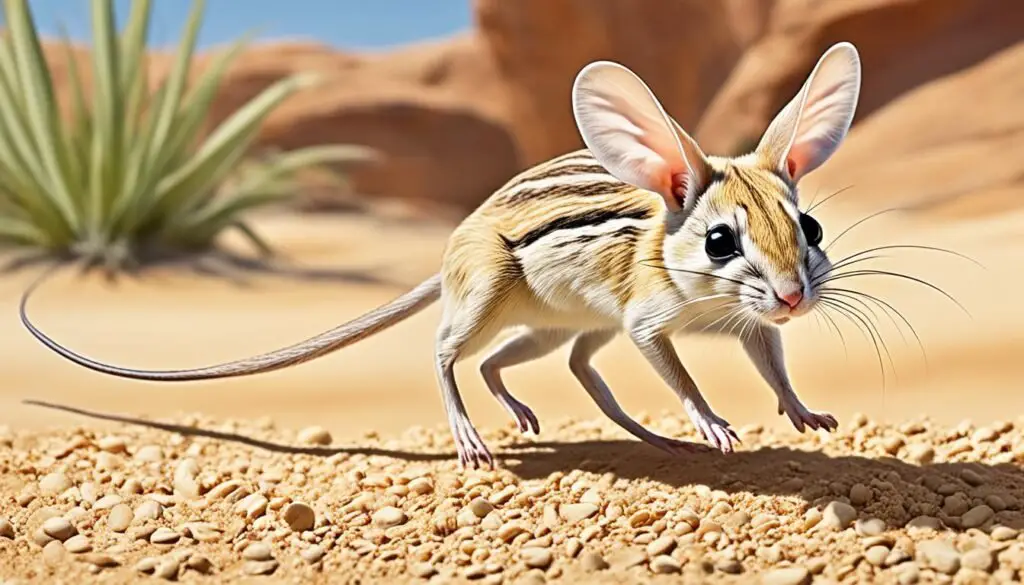Have you ever watched a hamster scurry across its cage, moving at lightning speed as if it’s perpetually late for something? It’s fascinating to witness the tiny creature zooming around with such agility and fervor. But have you ever wondered why hamsters are so fast, especially considering their small size?
Well, the truth is, hamsters aren’t the only small rodents with lightning-fast speeds. There are other members of the animal kingdom that can give them a run for their money, such as the jerboa and the kangaroo rat. These remarkable creatures possess a unique set of adaptations that allow them to move with incredible swiftness.
Just take a look at the jerboa, a small rodent found in desert regions across Asia, Africa, and the Middle East. With its long hind legs, it can effortlessly leap through the sand, almost as if it were flying. Similarly, the kangaroo rat, native to North America, also possesses long hind legs that enable it to navigate its sandy habitat with extreme agility. These rodents may live on different continents, but their shared leg structure grants them an extraordinary ability to outrun danger.
So, what exactly makes their long hind legs so special? And why are they crucial for their survival? In the following sections, we’ll delve deeper into the amazing adaptations of jerboas and kangaroo rats, exploring the secrets behind their speedy locomotion and uncovering the mysteries of their intriguing behavior.
Adaptations for Jumping and Locomotion
When it comes to jumping and locomotion, jerboas and kangaroo rats have developed remarkable adaptations to thrive in their respective habitats. These adaptations play a crucial role in their ability to navigate their environments with speed and agility.
One of the most significant adaptations in both species is their long hind legs. These legs provide the leverage needed for powerful jumps, allowing jerboas and kangaroo rats to cover long distances quickly. The hind legs are equipped with strong muscles that generate a significant amount of force, propelling them forward with each leap.

The elongated hind legs also enable these rodents to maintain balance while hopping through sandy and loose surfaces, such as their desert habitats. This adaptation allows them to swiftly maneuver through the challenging terrain without losing stability.
Although their front legs are shorter and not as strong as their hind legs, they play a crucial role in stability and maneuverability. The short front legs help jerboas and kangaroo rats maintain control and change direction when needed during their jumps.
Additionally, both jerboas and kangaroo rats possess long tails that serve as a counterbalance during jumps. These tails aid in steering and help these agile rodents maintain their trajectory and direction.
Habits and Behavior
When it comes to habits and behavior, jerboas and kangaroo rats share interesting similarities in their nocturnal lifestyle. These adorable rodents are most active during the night, taking advantage of the cover of darkness to navigate their sandy environments. The evolution of their crepuscular lifestyle allows them to adapt to their surroundings, ensuring their survival in harsh desert conditions.
One of the key factors that contribute to their survival is their keen senses, particularly their remarkable hearing. Jerboas and kangaroo rats have developed excellent auditory capabilities, which aid them in detecting potential predators and hunting for food sources in their sandy habitats.
Speaking of food, these rodents have adopted a mainly herbivorous diet. Their menu consists of an assortment of seeds, plants, and even insects, ensuring they get a well-rounded meal to sustain their energy levels.
Another interesting aspect of jerboas and kangaroo rats’ behavior is their solitary nature. These creatures prefer a solitary life, typically constructing their burrows to provide shelter and protection. These burrows serve as a safe haven where they can rest, escape the scorching heat of the day, and seek refuge from any potential threats that may lurk outside.
Overall, the habits and behavior of jerboas and kangaroo rats reflect their incredible adaptability to desert life. From their nocturnal lifestyle and keen senses to their herbivorous diet and solitary nature, these rodents have mastered the art of survival in their sandy habitats.
Conservation Status and Threats
Some species of jerboas and kangaroo rats are facing significant threats to their populations. One of the most pressing concerns is habitat loss due to human activities such as agriculture and urbanization. As human populations expand and develop, the natural habitats of these rodents are being encroached upon, leading to the destruction of their homes and food sources.
Furthermore, climate change and desertification are posing additional risks to the survival of jerboas and kangaroo rats. With changing weather patterns and increasing temperatures, the already harsh and fragile desert ecosystems are becoming even more inhospitable. These animals, adapted to specific desert conditions, are unable to cope with the rapid changes, putting their populations at risk.
Predation by other animals is another significant threat faced by jerboas and kangaroo rats. Foxes, snakes, and birds of prey are among the natural predators of these small rodents. As they are an essential part of the desert food chain, their increased mortality rates due to predation can have long-term ecological consequences.
Given these threats, conservation efforts are crucial to protect the habitats and populations of jerboas and kangaroo rats. It is essential to create awareness about the importance of these unique rodents and the role they play in maintaining the balance of desert ecosystems. Implementing measures to mitigate habitat loss, addressing climate change, and setting up conservation areas can help ensure their survival for future generations.
